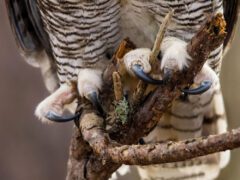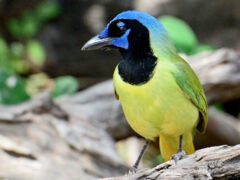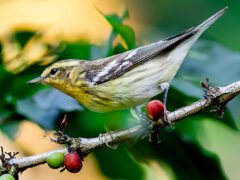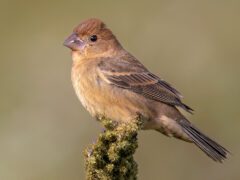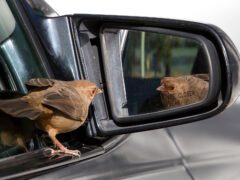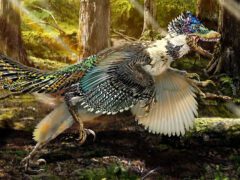Northern Shrike Similar Species Comparison
Main SpeciesNorthern Shrike
Immature
Chunky, big-headed songbird with thick, hooked bill. Gray head with black mask that narrows as it meets the bill and usually does not cover the top of the bill. White flashes in wings and tail.
© Cameron Montgomery / Macaulay LibraryBritish Columbia, November 28, 2020Immature
Chunky songbird with thick, hooked bill. More brownish than adult, with fine brownish bars on the underside. Narrow black mask.
© Brian Sullivan / Macaulay LibraryMontana, October 13, 2011Adult
Adults often have underparts finely barred with gray. Mask is narrow and usually does not extend over eye or bill.
© Ian Burgess / Macaulay LibraryBritish Columbia, January 01, 2017Immature
Immatures have finely barred underparts and indistinct or incomplete masks. Shrikes often sit on exposed perches and swoop down to catch prey on the ground.
© Ryan Merrill / Macaulay LibraryWashington, February 19, 2017Adult
In flight shows prominent white flashes in the wings and outer tail.
© Simon Boivin / Macaulay LibraryQuebec, January 06, 2017Immature
Predatory songbird; catches insects, birds, and small mammals. Breeds in far northern North America; for most birders, typically seen in winter.
© Yves Darveau / Macaulay LibraryQuebec, March 12, 2019Adult
Lives in open, brushy or grassy landscapes with exposed perches such as shrubs and fencerows.
© Darren Clark / Macaulay LibraryIdaho, April 11, 2019Similar SpeciesLoggerhead Shrike
Adult
Loggerhead Shrikes have a thicker black mask than Northern Shrikes that often extends over the eye and above the bill. They have cleaner white underparts without the fine barring of Northern Shrikes.
© Michael Smith / Macaulay LibraryFlorida, March 28, 2016Similar SpeciesNorthern Mockingbird
Adult
Northern Mockingbirds have smaller heads and thinner bills than Northern Shrikes. They also lack the shrike's clean gray back and black wings and mask.
© Jay McGowan / Macaulay LibraryNew York, December 07, 2016Similar SpeciesTownsend's Solitaire
Adult
Townsend's Solitaires have smaller heads and thinner bills than Northern Shrikes. They are brownish overall, without the shrike's gray back, whitish underparts, and black wings and mask.
© Ryan O'Donnell / Macaulay LibraryArizona, January 08, 2017Compare with Similar Species
Click on an image to compare
Species in This Family
More to Read
Don't miss a thing! Join our email list
The Cornell Lab will send you updates about birds,
birding, and opportunities to help bird conservation.




